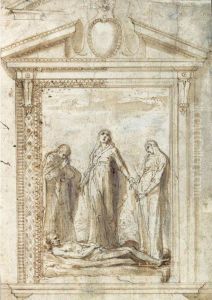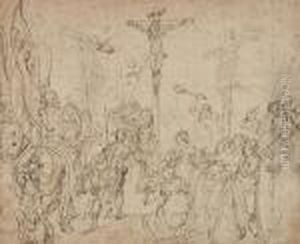Giovanni Del Vecchi Paintings
Giovanni De Vecchi, also known as Giovanni di Niccolò de' Vecchi, was an Italian painter of the Renaissance period. He was born in 1530 in Borgo San Sepolcro, Tuscany, which was also the hometown of the famed painter Piero della Francesca. De Vecchi is not as widely known as some of his contemporaries, but he made a significant contribution to the art of his time, particularly in the field of fresco painting.
De Vecchi trained under Giorgio Vasari, a prominent painter, architect, and writer known for his biographies of Italian artists. Under Vasari’s guidance, he honed his skills and developed a style characterized by its vivid color and dynamic composition. De Vecchi’s works often featured religious themes, a common focus for artists of his era due to the patronage of the Catholic Church and the influence of the Counter-Reformation, which sought to reaffirm the role of sacred art.
One of De Vecchi’s most notable works is the fresco cycle he painted for the Oratory of San Giovanni Decollato in Rome. This series of paintings is a prime example of his skill in conveying complex narratives and his use of rich colors. De Vecchi’s career also took him to various Italian cities, including Florence and Rome, where he contributed to the decoration of numerous churches and public buildings.
Despite his accomplishments, Giovanni De Vecchi remains a somewhat obscure figure in art history, overshadowed by the greater notoriety of artists like Michelangelo, Raphael, and even his teacher Vasari. However, his work continues to be appreciated by scholars and art enthusiasts for its craftsmanship and place within the broader context of Renaissance art.
Giovanni De Vecchi passed away in 1614, leaving behind a legacy of work that reflects the vibrancy and devotional spirit of late Renaissance painting. His contributions are preserved in the form of frescoes and altarpieces that continue to adorn the walls of Italian churches and institutions.

